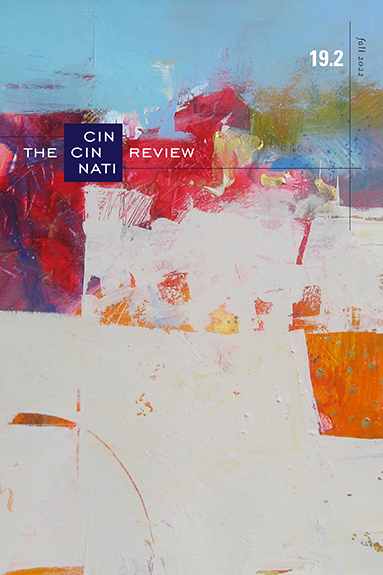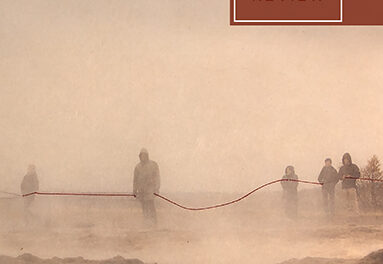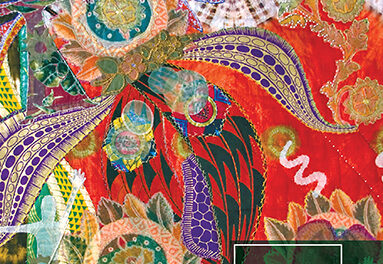We are pleased to share this review by Jess Barbagallo of The Methuen Drama Book of Trans Plays, which appeared in Issue 19.2 as part of a special multigenre review and essay feature on anthologies (read the entire feature here):
The Methuen Drama Book of Trans Plays. Eds. Leanna Keyes, Lindsey Mantoan, and Angela Farr Schiller. Bloomsbury, 2021. 456 pp. $34.95 (paper).
I have long considered the phrase “trans theater” redundant because theater’s fundamental premise is inherently trans. Or put another way, if tautologies irritate you: when an individual steps onstage, they unquestionably become another iteration of themself. For me, “suspension of disbelief,” the greatest of theatrical maxims, serves as a utopian model for the collective emotional investment we should all have in others achieving the bodily experience of their most deeply felt selves.
These are not thoughts I invoke glibly or without vested interest. Having transitioned within my New York City theater community over more than ten years, I understand the necessity and value of carving out a space to showcase the theatrical contributions and visions of trans-identified artists, whose work has been too often neglected, appropriated, and undersung.For the last several years, I’ve taught a course at New York University called “Approaching Legibility: Trans*-Inflected Theatre and Its Potentials.” I created the class when there was no textbook to model my endeavor after, only my personal experiences, alongside PDFs or scratchy performance footage shared with me by other trans playwrights and performance makers, including Sylvan Oswald, Mashuq Mushtaq Deen, Cecilia Gentili, and Becca Blackwell. I rounded my syllabus out with excerpts from theoretical texts including Captive Genders: Trans Embodiment and the Prison Industrial Complex (AK Press, second edition, 2015) and Trap Door: Trans Cultural Production and the Politics of Visibility (MIT Press, 2017). Still, I knew my drama students were hungry for plays about these subjects. And I was too.
The Methuen Drama Book of Trans Plays, a 2021 anthology edited by Leanna Keyes, Lindsey Mantoan, and Angela Farr Schiller, is precisely what my students and I had hoped for. With these eight plays, each accompanied by an intelligent introduction, the collection highlights how trans writers play with time in order to shed light on—and undermine—the strictures of white Western heteronormativity. In their opening essay “In a Trans Time and Space,” the editors suggest that “queer and trans temporalities eschew linearity in favor of backward folds woven together with leaps of futurity.” Core life phenomena like aging, memory, and life planning look and feel different for trans individuals, and sometimes this difference creates as much or more drama than any beef with a given interlocutor. While there are no fixed formal mandates for representing trans temporality, the editors explain that they prioritized ensuring that “trans people recognize themselves in the art.” In that sense, this anthology is more concerned with ethics than technique. The featured plays’ casting mandates ensure juicy, multidimensional roles for trans-identified individuals and insist that special care be taken not to retraumatize trans creators and spectators in the realization of these works. At the same time, unifying works around a moral agenda linked to the power of legibility—“Do trans people recognize themselves in the art?”—makes a reader like me wonder after the weirder, less graspable concoctions that didn’t make the cut.
Not that these plays are straight. Far from it. Take Azure D. Osborne-Lee’s Crooked Parts, which weaves together two episodes in the life of its hero, an aspiring writer named Freddy Clark. When we first meet Freddy, a Black pre-op trans man in his late twenties, he is visiting his family in an unidentified city in the American South to celebrate the birthday of his troubled younger brother, Stephen. The play toggles between 2013 and 1995, when Freddy was known by his family as Winifred. In a preface, the scholar Marquis Bey notes that the title refers to the crookedness of the play’s chronology and the protagonist’s gender. (Bey also notes the difficulties of describing the play, asking “Does one use ‘she’ pronouns for Winifred when discussing Crooked Parts or does one project Freddy’s ‘he’ pronouns back into the past, giving the child Freddy a kind of gendered constancy?”) In my mind, “crooked parts” also references the challenge and charge of hair: Freddy’s childhood is marked by tension with his mother Angela over how to wear his; as a Black student new to a predominately white school, he must shoulder the racism of his peers’ put-downs, while attempting to protect his mother, who styles his hair and is thus also implicated by their cruelty. In both years, Freddy struggles to break free of her maternal grip, while Angela grapples with his need for independence, which she perceives as a slight.
Osborne-Lee deftly depicts familial microaggressions, including deadnaming, with nuance and empathy for Freddy’s family’s struggles to reconcile their memories of Winifred with the reality of Freddy. Consider this short scene at the top of the play:
FREDDY: . . . I’m going up to bed now, but let’s have birthday breakfast in the morning, okay? My treat!
STEPHEN: Okay. Sounds good, sis!
FREDDY: Bro.
STEPHEN: What?
FREDDY: I’m your brother, Stephen. Bro.
STEPHEN: Oh. Right. Sorry.
FREDDY: Don’t forget. Goodnight.
STEPHEN: Goodnight.
As Stephen prepares a snack, an exhausted Freddy disrobes, sighing with relief as he removes his compression garment. But before he can get too comfortable, Stephen is at the door again, saying, “Hey, bro . . . uh . . . I made us some nachos. I thought you might be hungry.” Freddy makes a place for Stephen in his bed, pulling the comforter up around his unbound chest. It’s a remarkable scene, tentative and full of delicate negotiation. We see Stephen apologize for his error and gain a better understanding of the many labors Freddy must perform in order to have his masculinity affirmed. The play steadily builds toward a similarly tender meeting between Winifred and Freddy, who advise and console each other. Winifred compliments Freddy’s nascent mustache, while Freddy reminds the child he once was of her tenacity in the face of white supremacist bullying.
The “prodigal son returns home” narrative also drives MJ Kaufman’s Sagittarius Ponderosa. A white genderqueer named Archer, in the throes of a subdued quarterlife crisis, makes love to a stranger beneath a four-hundred-year-old ponderosa pine. Meanwhile, Archer’s father’s health declines and his feisty grandmother plots to find him a suitable marriage partner. As in Crooked Parts, the family struggles to understand his gender, epitomized by Kaufman’s character description “Archer to himself, Angela to his family.” But that doesn’t mean Archer goes completely unheard. Proximity to his queer child inspires Archer’s father, Pops, to change his name before he dies—though he chalks it up to the recommendation of his doctor—in a humorous and beautiful ceremony in the family’s kitchen. The ever-present tree, nestled in the expanse of a great forest, serves to remind us that the human life span is brief and that civil decorum can become arbitrary, disconnected from seasonal rhythms of shedding and regrowth.
Kaufman (whose play Association of Controlled Dreamers was the first drama feature in The Cincinnati Review, in 2018) repeatedly rebuffs the popular notion that we ascend into adulthood only to decline in old age. While Archer’s sweet grandmother fails to secure her grandson a steady beau, she finds one for herself. In one of the play’s more ingenious twists, Peterson, her boyfriend at the nursing home, is played by a puppet moved by Pops. When Pops passes away, Peterson takes his place at the family table, but Pops, the faithful puppeteer, is never far away. The family itself takes a new shape, yet the ecosystem of familial love remains intact, strengthening itself through the acceptance of grief and an openness to change.
Mashuq Mushtaq Deen’s The Betterment Society situates itself in a far more dystopian environment. In Deen’s brutal comedy, three women—Gertie, Lynette, and Doreen—live atop a mountain together, occasionally traveling into town for supplies that they trade limbs to procure. When Lynette reveals that she is pregnant, the trio of women must collectively determine their capacity to care for one more creature while they already live in precarity. In anticipation of the baby, the optimistic Doreen begins to sew a doll, whom she names Lil’ope. The curious rag doll comes to life through Doreen’s powerful imagination; Deen describes Lil’ope as “a magical creature of possibility” and instructs that the doll be played by three or more masked dancers who move in unison. With their help, Doreen implores spectators to consider that they are not in a theater but a church and, if they agree, to join her in song. It’s a strangely earnest proposition—and a gamble, as Deen has written two different endings to accommodate the audience’s potential response. The juxtaposition of bluntly queer feminist content and liturgical dance lends Doreen’s cry for God an air of radicalism. In fact, it made me think of the God I imagined as a child: not a policing, vengeful deity but the immaterial energy of pure benevolence.
Many protagonists of these plays linger in the residues of their former incarnations and encounters, so it seems inevitable that reading the collection would fill me with nostalgia for my own former selves—ones less jaded, less fixed, less formed. j. chavez’s how to clean your room (and remember all your trauma) features just such an open lead character, adorable and dangerous in their exuberance. In the play, Spencer, a nonbinary person of color, cleans their room, sorting ordinary objects that evoke painful memories. At the top of Cycle 1—the play is composed of two “cycles” rather than traditional “acts”—a chorus announces:
Spencer enters
they are in need of meds
and a hug
Despite the tendercore vibes of the pronouncement, I was disarmed by the acute honesty of the description; nearing forty, I enter my own messy apartment many nights feeling the same set of needs.
The play moves through Spencer’s undergraduate years, portraying a series of grungy encounters with friends, interspersed with renditions of poems Spencer has collected in a book they eventually will disseminate to their family and peers. At an open mic, Spencer reads one of these poems:
um, this next one is called
my actions
“I am so tired
I am so exhausted
I am so lost
my actions
and decisions
have consequences
I made my bed
so I slept in it
that nap was a mistake”
Here, pure pathos is alleviated by wry self-awareness. Spencer has made many mistakes. They drink too much, struggle to manage their educational workload, develop codependent relationships, and smother their kin with neediness. how to clean your room has the unabashed moodiness of an emo band’s first EP. That specific musicality is achieved through a number of strategies. Scenes fade in and out, often beginning in medias res or ending without resolution. Dialogues are framed like numbered tracks by the aforementioned Chorus, which narrates in a mixture of fragmented observations and phrases stolen from Spencer’s notebook:
Nine.
“I just want him to respond . . .”
Al appears
he and Spencer can’t see one another
there’s distance
Spencer, meanwhile, manically narrates their own life, making every moment a high-stakes confessional. When Al doesn’t answer their call, for example, Spencer says,
Oh god, he’s mad
He’s mad at me, I know he’s mad
I’m mad
I’m pissed
at myself
Jesus, of course he doesn’t want to fucking talk to me
I wouldn’t even want to, fuck
I can’t believe I lied to him . . .
And so forth. Nothing much happens in how to clean your room: Spencer decides to stay home rather than go out drinking with friends; their room becomes marginally cleaner. Yet the work is gripping. Plays are an indispensable cultural technology in part because of their ability to slow climactic violences down by isolating the banal traumas that produce discord. I suppose what makes this text effective is that every moment with it was one in which I actively chose peace and curiosity over self-loathing and regret.
If I wished for anything else from this anthology, it would be a little more mess and disagreement within its pages. With the exception of a wonderful conversation between Mashuq Mushtaq Deen and his friend Stephanie Hsu, who discuss, among other things, the tense alliance between arts and academia, the book primarily relies on understanding plays through theory, and that theory often reads as distanced and cool. As a teacher who regularly leans into this teaching model with varying degrees of success, I couldn’t help but wonder if other complements to the plays might have more viscerally evoked the strategies trans people use to make art, byproducts of the skills they develop in order to survive.
Jess Barbagallo is an actor/playwright. His work has been presented at Dixon Place, La MaMa ETC, New Ohio Theatre, Poetry Project, Performance Space New York, the Ontological-Hysteric Theater, the Experimental Theatre Wing at NYU, The Brick, and Abrons Art Center. He is a columnist at Artforum.











